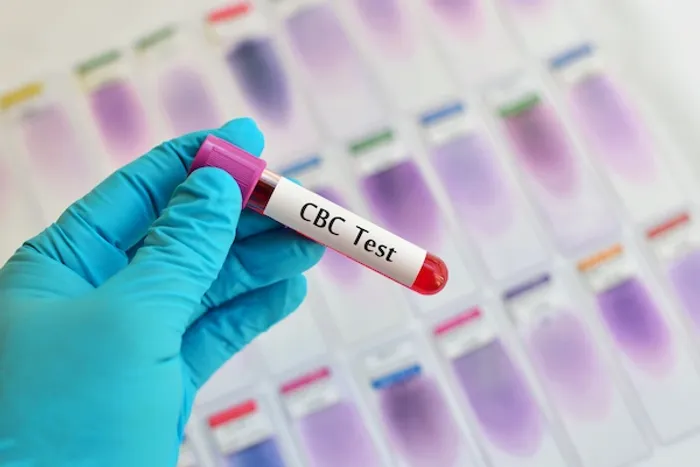What Does Low Haemoglobin in CBC Mean for Women?
Know all about low haemoglobin in CBC. Who is vulnerable? Test interpretation, symptoms, causes and more. Learn about the supplements and diet information for a healthy you.

Written by Dr. Rohinipriyanka Pondugula
Reviewed by Dr. Md Yusuf Shareef MBBS
Last updated on 9th Sep, 2025

Low haemoglobin levels in the Complete Blood Count (CBC) are a common finding among women aged 20 to 40 in India. Often flagged as anaemia, this condition typically stems from nutritional deficiencies, heavy menstruation, pregnancy, or lifestyle factors. Understanding what low haemoglobin CBC results mean, and acting on them early, is crucial to maintain energy, immunity, and overall well-being.
Haemoglobin is the oxygen-carrying protein in red blood cells. It plays a crucial role in transporting oxygen from the lungs to various tissues and organs throughout the body. When haemoglobin levels drop below the normal range, it means the blood is not able to carry sufficient oxygen, which affects multiple systems in the body.
This can lead to persistent tiredness, increased susceptibility to infections, and even complications during pregnancy or physical exertion. In this detailed guide, we’ll explore everything you need to know about low haemoglobin levels in a blood test, from causes and implications to the next steps. We’ll also help you understand how to differentiate between types of anaemia based on CBC parameters, and when it’s time to follow up with more specific tests.
Why Does Low Haemoglobin Matter in a CBC Test?
Haemoglobin (Hb) is measured as part of a routine CBC, which also includes red blood cells (RBC), white blood cells (WBC), and platelets. In women, normal haemoglobin levels typically fall within the range of 11.6 to 15 g/dL. Anything below this can indicate anaemia.
Common categories:
- Mild: 10–11.5 g/dL
- Moderate: 8–10 g/dL
- Severe: under 8 g/dL
A low haemoglobin count is not a disease by itself but a sign of an underlying issue. Most often, the cause is iron deficiency, but it could also result from blood loss, chronic illness, vitamin deficiencies (B12 or folate), or genetic disorders.
Why Are Women Aged 20 - 40 More Vulnerable?
Several factors contribute to higher anaemia risk in this demographic:
- Menstruation: Monthly blood loss naturally increases the body's demand for iron.
- Pregnancy and lactation: Increase blood volume and nutrient requirements significantly. In fact, anaemia during pregnancy is a major public health issue in India.
- Dietary habits: A largely vegetarian diet, common in Indian households, often includes non-haem iron, which is less bioavailable than haem iron found in animal products.
- Busy lifestyles: Skipping meals, stress, and irregular eating patterns reduce overall nutrient intake.
Cultural factors may also play a role. Many women prioritise the family’s nutrition over their own, which can lead to long-term deficiencies.
Interpreting CBC for Iron Deficiency
A CBC for iron deficiency doesn't just focus on haemoglobin; it evaluates:
- MCV (Mean Corpuscular Volume): Indicates the average size of red blood cells.
- MCH (Mean Corpuscular Haemoglobin): Reflects the amount of haemoglobin in a red blood cell.
- RDW (Red Cell Distribution Width): Measures the variation in red blood cell size.
Interpretation:
- Low MCV and MCH = microcytic hypochromic anaemia, commonly due to iron deficiency.
- High MCV = macrocytic anaemia, which could be caused by B12 or folate deficiency.
- Normal MCV = could be normocytic anaemia, often linked to chronic disease or acute blood loss.
Book These Essential Tests
While a Complete Blood Count (CBC) is a crucial first step in detecting anaemia, a proper diagnosis often requires additional tests to pinpoint the exact cause and guide treatment. Here are the key tests you should consider:
- Complete Blood Count (CBC): Primary screening test to check for low haemoglobin, red blood cell count, and cell indices.
Book a Complete Blood Count (CBC)
- Serum Ferritin: Measures stored iron levels in the body, low levels indicate iron deficiency anaemia.
- Serum Iron + TIBC (Total Iron-Binding Capacity): Evaluates how much iron is in the bloodstream and how efficiently it binds to transport proteins.
Book a Serum Iron + TIBC (Total Iron-Binding Capacity)
- Vitamin B12 & Folate: Deficiencies in these nutrients can cause macrocytic anaemia and must be ruled out.
- Reticulocyte Count: Assesses how actively your bone marrow is producing red blood cells, helpful in determining if anaemia is due to production issues or blood loss.
Booking these tests together can provide a complete picture of your red blood cell health and help your doctor recommend the right treatment.
Get The Tests To Check Your Haemoglobin Level
Signs & Symptoms to Watch
Even mild anaemia can cause noticeable symptoms that affect your daily life. Often, these signs are overlooked or mistaken for stress or overwork, particularly in women balancing work and home. Be alert to the following symptoms:
- Chronic fatigue or general weakness
- Dizziness or episodes of fainting
- Shortness of breath, especially during exertion
- Pale skin, lips, or nail beds
- Frequent headaches
- Cold hands and feet
- Irregular or rapid heartbeat
If you experience any of these symptoms regularly, it’s important to get tested. Early detection and treatment of anaemia can prevent complications and improve quality of life.
Strong Nutrition Ties: Diet Remedies
Anaemia, especially when due to iron deficiency, is closely tied to nutrition. Here's how women can improve haemoglobin levels through dietary choices:
1. Iron-Rich Foods
- Heme iron sources: Liver, lean meat, fish, poultry (more easily absorbed)
- Non-heme iron sources: Spinach, lentils, beans, tofu, fortified cereals, jaggery, pumpkin seeds, dried fruits
2. Improve Iron Absorption
- Pair iron-rich meals with vitamin C sources (amla, oranges, guava, lemon, bell peppers)
- Avoid drinking tea or coffee around meals as they reduce iron absorption
3. Folate and B12 Sources
- Folate: Green leafy vegetables, sprouts, legumes, papaya, bananas
- B12: Eggs, dairy, fish, fortified plant-based milk or cereals (especially for vegetarians)
4. Other Supportive Nutrients
- Vitamin A: Needed for mobilising stored iron
- Copper: Plays a role in iron metabolism
- Protein: Essential for haemoglobin synthesis
A weekly diet plan incorporating pulses, green vegetables, vitamin C-rich fruits, and adequate proteins can work wonders over time.
Lifestyle & Supplement Protocol
Managing anaemia effectively involves more than just improving your diet—many cases, especially moderate to severe ones, require targeted medical supplementation. Here’s a practical guide to follow:
1. Medical Supplements
- Oral iron supplements: Common forms include ferrous sulphate or gluconate. Best taken on an empty stomach with orange juice or any source of vitamin C to enhance absorption.
- Possible side effects: Constipation, black stools, nausea, or gastric discomfort. Inform your doctor if these are severe.
- Vitamin C: Taking vitamin C along with iron improves absorption significantly.
- Folate and Vitamin B12 supplements: Prescribed if blood tests reveal deficiencies.
- In severe anaemia: Intravenous (IV) iron therapy or blood transfusions may be necessary under medical supervision.
2. Lifestyle Changes
- Don’t skip meals: Regular, balanced meals support nutrient absorption and red blood cell production.
- Avoid junk food: Processed foods are typically low in iron, B12, and folate.
- Exercise regularly: Gentle activities like walking improve blood circulation, oxygen delivery, and appetite.
Combining supplements with healthy lifestyle habits offers the best long-term results in correcting and preventing anaemia. Always follow your doctor's instructions when starting any supplement regimen.
When to See a Doctor & What is the Recommended Test Frequency?
Visit your doctor if:
- You feel persistently tired, breathless, or dizzy
- Your periods are heavy, irregular, or prolonged
- You are planning a pregnancy or are already pregnant
- You have recently delivered a baby and feel weak
- A recent CBC shows Hb <11.5 g/dL
Recommended testing frequency:
- Mild anaemia: Every 2 to 3 months until resolved
- Moderate: Every 6 to 8 weeks
- Pregnancy: Each trimester and 6 weeks postpartum
- Post-treatment: Annual CBC as part of a routine health check-up
How to Interpret CBC Results?
Interpreting your Complete Blood Count (CBC) results may seem complex, but understanding the basic values can help you make sense of your health status. Each component, like WBCs, RBCs, haemoglobin, and platelets, offers clues about possible infections, anaemia, or other medical conditions. Here’s what it means:
Conclusion
For Indian women aged 20–40, low haemoglobin in CBC usually points to iron deficiency anaemia, a condition deeply connected to nutrition, lifestyle, and reproductive health. Ignoring the signs can lead to complications, but with awareness, timely testing, dietary improvement, and supplementation, anaemia is both treatable and preventable.
Leverage diagnostic support through Apollo 24|7 for CBC, iron, and anaemia panels. Their certified labs, easy online booking, and home sample collection make it convenient to prioritise your health. Early diagnosis through CBC for iron deficiency, improved nutrition, and consistent monitoring empower women to live healthier, more energetic lives. Don't ignore the signs. Book your test today and take the first step toward better blood health.

